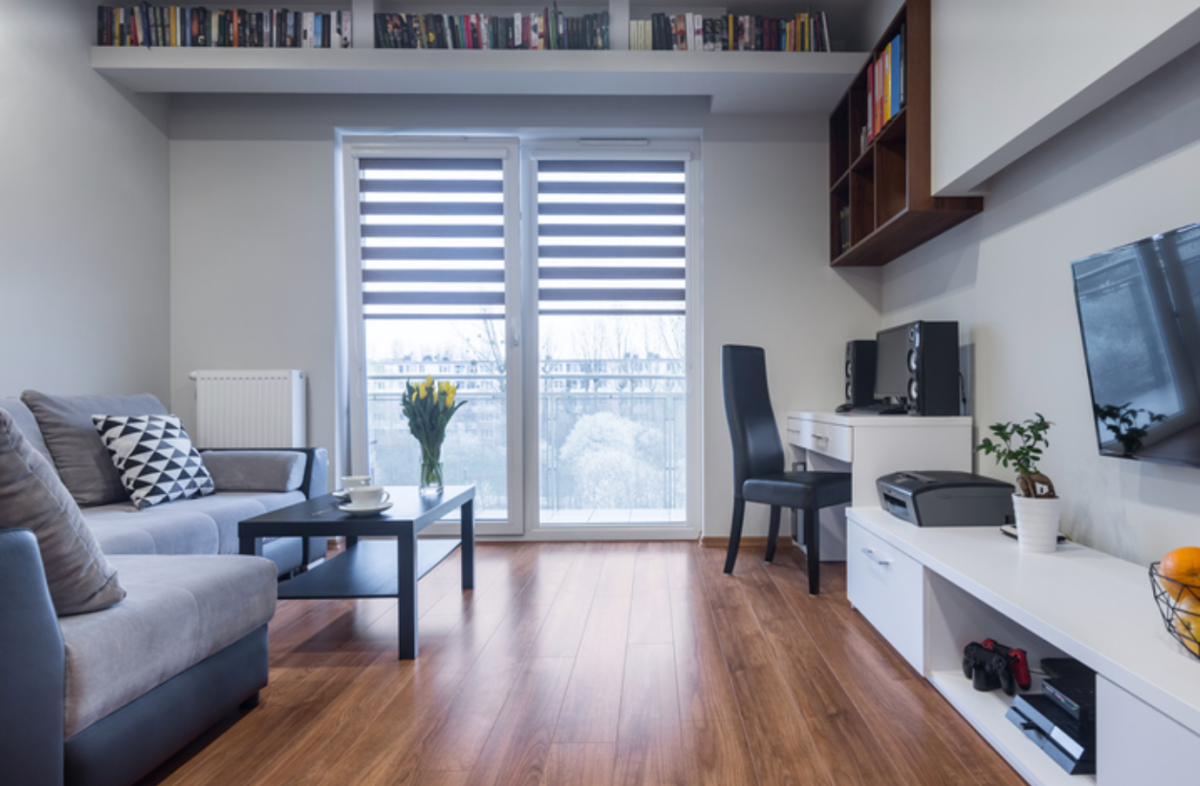BY CATE CORCORAN
A small space can be a plus in many ways, spurring creativity, quality, and living lightly — and it’s certainly easier to clean.
The key is to use the space you have smartly and adapt it to your needs, whether you are one person or many.
- Edit possessions to fit your space. Clothes, toiletries, books, decorative objects, keepsakes and equipment can be pared down, leaving room to breathe. Excess can be stored, digitized, or donated.
- Each household should ideally have at least four closets. These include a coat closet, linen closet, extra large deep storage and broom closet (for awkward items), and at least one clothing closet per person. If you lack adequate closet space, you will likely need to find alternative storage space for these items. Coats can be hung on hooks near the front door, linens on wall-hung shelving in the bathroom or over a door, and clothing hung on hangers in a wardrobe or on a rolling rack.
- William Morris’ adage to have nothing that is not beautiful or useful still applies. Make sure a healthy percentage of your living quarters is aesthetically pleasing, not only functional, and includes uncluttered surfaces and empty space as well as decorative moments. Don’t stuff a house to the brim with items in cardboard boxes or plastic containers — a home should not resemble a storage unit. A group of metal tins, wooden or paper-covered boxes, or colorful African baskets on a shelf can hide clutter and become a design element.
- Find storage: On a wall, between studs, under a bed, in the recess between a wall and a chimney, under a table, on a two-sided bookcase acting as a room divider, on a counter, in the oven. Off-season clothes can be stored under a bed in zippered containers made for that purpose, plates can be stacked and silverware grouped in jars or cans on a counter if you lack kitchen drawers and cupboards, and a console table with solid or covered sides between a wall and couch can hold lamps, a book or two, and a catch-all dish on top while hiding awkward items underneath such as out-of-season bedding, winter boots and holiday decorations.
- Even if it is only a wall-hung shelf and hooks because you don’t have space for a table and chair, designate a spot near the front door for coats, bags, keys, mail and whatever else you are bringing in or taking out.
- Demarcate functions in one room. For instance, you can create a dining space, office, and lounging area in a studio apartment simply by furniture placement. You can also separate or hide areas — such as an entry door, kitchen, or sleeping area — with a two-sided bookcase used as a room divider.
- Customize. Make it, commission it, alter it, copy it. At one extreme is a custom architect-designed staircase that functions as a bookcase, desk, and art object — as in a Paris loft by interior designer Marianne Evennou. At the other is the most inexpensive and simple solid wood table, with plastic chairs and a guitar hung on hooks on the wall when not in use. Chairish and other sites offer simple furniture such as upholstered banquettes and tables meant to be covered that can be ordered in custom sizes and fabrics. To give a built-in look and create storage where there is none, build two closets and place a sideboard, couch or bed in the niche between them. Metal and wood shelving and cabinets by early modernists you admire can be knocked off in sizes to fit your space. Adding bookshelves and a desk can be as simple as putting up shelving on wall-hung metal brackets.
These tips and tricks can also be used to great effect in larger homes. The difference is you will be able to have more purposefully empty space, accommodate more people, and dedicate more space to specific functions such as dining or a hobby.
This story first appeared in Brownstoner




































